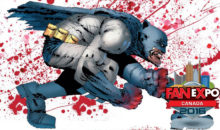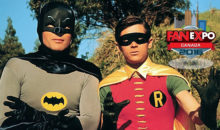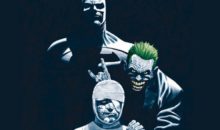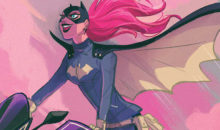5 Ways Batman v Superman Could Have Been Better
I present to you a constructive critique the latest super-flick, Batman v Superman. Was that 30-something percent on Rotten Tomatoes really necessary, guys?
There are many different kinds of bad movies. Some are the so-bad-its-good variety like Tommy Wiseau’s The Room. Some are of the mindless fun stock like Paul Blart. Some, like the latest attempt at a Fantastic 4 movie, are just plain bad. But Batman v Superman struck me as being the most frustrating kind of all: like the Star Wars prequels, it’s the kind where there is a good movie with good intentions buried in there somewhere.
Although the crippling views of critics is a little hard to swallow, there are certainly a few ways the film could have been more polished.
1: Pick a Plot Line
It’s actually somewhat refreshing that the movie has a few twists and turns that don’t make it entirely about Bats and Supes beating each other up. But the so-called ‘gladiator match’ between these two ends up carrying just a bit too much baggage. The film’s story mashes together The Dark Knight Returns with The Death of Superman while also setting up the Justice League franchise and having a lot of really trippy dream sequences. But all I really got out of said sequences was that Batfleck really likes Fallout: New Vegas and that Kevin Costner needed a break from playing football coaches.
It doesn’t feel like an overcrowded film, but it does seem like it could have been 2 or 3 movies. The movie about Bruce Wayne and what makes him tick as an aging vigilante was poignant and careful, but the movie about Lex Luthor’s confusing sense of religious terror was underwhelming and the movie about the place of Superman in a society of puny humans is new and shocking only if you’re a college freshman reading comics for the first time since childhood.
2: More Wonder Woman
And/or, more of what we haven’t seen a million times over. We’ve had so many Bat- and Super- men on screen for decades now but we’ve had exactly 2 live-action Wonder Women. She was a refreshing part of the film for many reasons. Other than providing a break from the movie’s predictable strong man contest, she shows up and actually does heroic things and has apparently been doing so for centuries while the men squabble over their mothers. As much as the DC’s film franchises feel rushed and half-hearted at times, they haven’t hesitated to give us a Wondy movie, which is currently in production. Meanwhile the Marvel Cinematic Universe is giving us Captain Marvel, a film that was announced for… 2018, a literal entire decade after the birth of the MCU. It along with Black Panther were pushed back to make room for another goddamn Spider-Man film, because delaying the debut of the MCU’s first female and black superhero solo films for the sake of something we’ve seen 5 times already is an extremely creatively sound and progressive move.
Nevertheless, the attention drawn to Diana is important to note. It proves that stories that aren’t muscle men having by-the-numbers superhero adventures can be compelling and profitable.
3: Better Villains
Jesse Eisenberg is a good actor, or at least an actor with some schticks he does very well. Lex Luthor is a good villain. However, sometimes things that taste good separately don’t always work together, like George Clooney’s Batman. To Eisenberg’s credit I didn’t want to actually punch him in the face and there are some scenes where he does come off as genuinely intimidating. His inferiority complex and daddy issues hint that he may not necessarily be THE Lex Luthor, and coupled with the multiverse being confirmed in the recent Flash-Supergirl teamup on TV, we certainly have the makings of a compelling universe here. A recently-revealed deleted scene gives this version of Lex more pathos, hinting that his psychosis might be due to some Lovecraftian madness incurred from seeing things that no man ought to. The problem is that he’s doing too many things with surprising clarity for the twitchy lunatic angle to work. He orchestrates the duel between Bats and Supes, has been keeping extensive tabs on other superhumans, may have foreseen Darkseid while taking in the Kryptonian ship’s knowledge of 100,000+ other worlds, finds time to blow up part of Congress, and also creates Doomsday, whom is kinda just… there.
As Superman’s Big Bad, Luthor needs to be larger than life and a total megalomaniac, but this Luthor seems more like a scheming nerd kid trying to get revenge on the popular Quarterback. Having your supervillain be a psychotic/bored Gen-X tech bro CEO was already done better in Borderlands 2. And come on, not even in Borderlands did they stoop to the villain doing pee gags.
4: An Actual Colour Palette
A popular complaint about Man of Steel and BvS is that for all of Snyder’s talent as a visual director, the colours are just too dreary. And this is a gripe where frankly, fans and critics are correct. It’s not so hard to hop onto YouTube and find amateur edits of scenes from Man of Steel in which the colour saturation is boosted. It adds some “oomph” that was lacking before. Henry Cavill is a good choice for Superman – he’s got the chiseled, naive yet wise look and fills out the Super-suit nicely. So why hide that behind Instagram filters?
One aspect that makes the conflict between Batman and Superman compelling is the aesthetics of it. Batman is driven by post-traumatic stress and works during the night. He is an inherently dark hero. Superman is literally solar-powered, and as a civilian he is a farmer and a journalist. Although his super-suit looks more richly coloured compared to Man of Steel, we can barely see it. Likewise Jeremy Irons’ Alfred, whom effortlessly steals every scene he’s in, spends most of the film half-cast in shadows. Having two caped muscle men fight each other when they are both being dark and brooding isn’t as exciting as having a conflict between dark and light. This is supposed to be an intense battle. You want people to watch and pay attention.
Even Wonder Woman falls victim to the muddy, moody tone with a costume that tries to separate itself from Lynda Carter’s spangly getup, but ends up looking just a tad too much like Xena.
Occasionally, the film plays with colour and light using the Kryptonite, and it does establish mood, much like how Snyder and co. used Dr. Manhattan as a light source in the Watchmen film. But other than the Kryptonite, most of the sources of colour and light in BvS are fire, lasers and explosions.
Guys seriously. If you’re going to make a monochromatic, ultra-violent film with a script practically written using Frank Miller’s blood for ink, just make more Sin City movies.
5: Shorten Snyder and Goyer’s Creative Leashes
Snyder is a great director for actors and for filming action sequences. Writing, however, is not his strength, hence he focused on direction for this film and the script was penned by David S. Goyer, whom has a number of both creative successes and flops in his portfolio. On the one hand Goyer helped pen The Dark Knight and Blade trilogies, but on the other hand he’s also responsible for the 3rd installment of those both as well as Ghost Rider; and he also doesn’t seem to get She-Hulk at all.
One of the fatal flaws of BvS is that Goyer did not learn from his mistakes on Man of Steel. The story proceeds clumsily and much of the ideology is half-baked. Early on in the film we get a juxtaposition of how both Clark and Bruce rescue endangered little girls. Batfleck is a One-Percenter with a conscious; during the collateral damage during Superman and Zod’s fight, Bruce genuinely cares for his employees and makes an effort to ensure their safety. Upon seeing a terrified child in the rubble, he puts himself in harm’s way to comfort her even if it means setting off his own PTSD. As he watches the Men of Krypton do battle, we know that Bruce sees in Superman the same thing he saw in the man who shot his parents.
A few scenes later we see Superman fly off and effortlessly nab a girl from a burning building. He plants her on the ground and nonchalantly accepts worship from the common people, which leads awkwardly into a segway where members of the media debating about how to solve a problem like Superman. Clark is inherently human, but we never really get a sense of how he feels about this reverence from the general public.
The film talks a lot without really saying very much, and seems to act as sort of a sampling platter for DC’s two biggest heroes and what they stand for. You’re given a lot of ingest but not very much chance to figure out how you feel about it. Even the previous Dark Knight saga by Christopher Nolan left very little room for personal interpretation, most content being analyzed for you. BvS has the opposite problem, where too much is said and most of it not actually seen through. It is perhaps for this reason why passing off the writing and directing to long-time fanboy Ben Affleck is actually a good thing.
Because when films like this flop in the eyes of critics, it’s not the producers and directors who have to go in front of the media and account for it, it’s the cast, whom try their best and end up shouldering the majority of the flack, even for things they can’t control.
Ben, you ok buddy?













